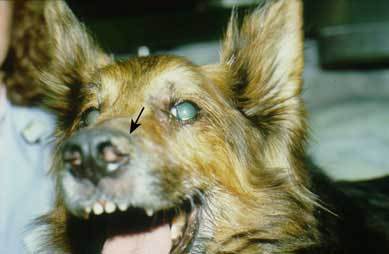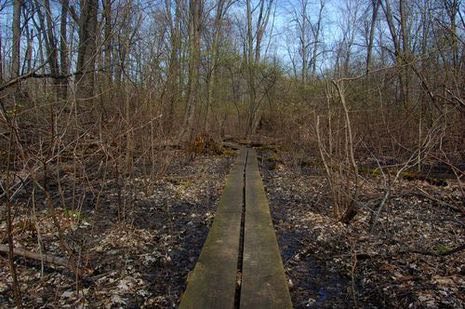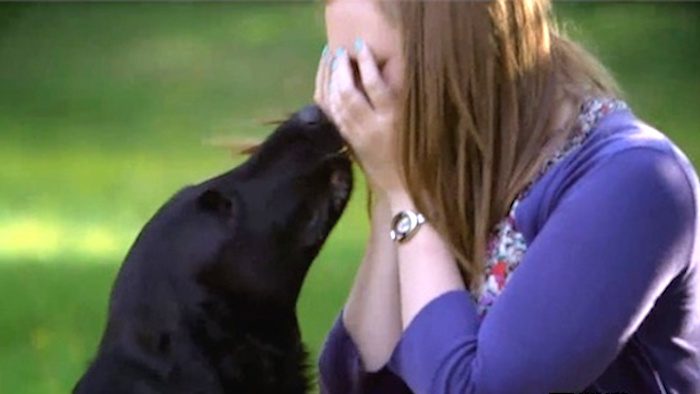Blastomycosis in Dogs: Symptoms, Treatment and Prevention
Blastomycosis is a relatively rare, but potentially fatal fungal infection caused by the pathogen Blastomyces dermatitidis. The fungus grows in moist soil or vegetation. In certain conditions, spores are released into the air that can be inhaled by dogs or people, thereby infecting them.
Once the pathogen enters the lungs, the spores transform into large, thick walled broad-based budding yeast that multiply within the lung and other tissues of the infected animal. The symptoms and illness that evince in a dog can be extremely variable.
Although the disease primarily affects a dog’s skin and lungs, the eyes, joints and other organs can be affected as well. Ocular blastomycosis can cause rapid and permanent blindness. If left untreated, the disease will eventually cause death.
When the soil or vegetation where the fungus lives is disturbed, the infectious spores are released into the air. Dogs may develop blastomycosis by breathing the pathogen into their lungs or having it enter through an open wound.
The soil can be disturbed by an activity such as digging in the dirt or following a scent trail. Conversely, in dry weather the spores may simply spread through dust, such as at a recently excavated area or areas undergoing construction.
The Blastomyces fungus thrives in wet environments, such as riverbanks, lakes and swamps, where damp soil lacking direct sunlight fosters growth of fungi. It is also present in areas that are rich in decaying matter, such as wooded areas, forests, and farms. Studies have concluded that most affected dogs live within at least 400 meters of a body of water.
B. dermatitidis is widely distributed geographically and has been detected throughout North America with the highest prevalence of infection taking place in geographic areas located near water – such as the Mississippi, Ohio, Missouri, and Tennessee River basins. However, it is also in the central and southeastern United States, in Canada, India, Israel, Saudi Arabia, and Africa.
Although widespread, the actual area infected with B. dermatitidis is likely to be restricted to a small area and may be limited to one rotting log or several square yards of infected soil. Depending upon environmental conditions, the area may be infected for only a brief time.
Therefore, one factor that greatly increases the chances of getting Blastomycosis is where you live and the activities you do with your dog(s). The disease is typically associated with large hunting and working breeds of dogs, as they are often exposed to the environments where the fungus is more likely to be found. However, all breeds of dogs are susceptible to blastomycosis and the fungi can occur in urban, as well as rural, environments.
The disease cannot be spread from a dog to a human or from human to dog.
Symptoms of Blastomycosis
As the pathogen multiplies, it spreads out of the dog’s lungs or wound into the lymph nodes and/or vascular system.
Blastomycosis is a chronic infection, and dogs are usually sick for several weeks before any diagnosis is made. Sometimes it can be mistaken for another illness like pneumonia, because of its impact on the lungs.
If your dog’s symptoms do not go away, be persistent with your veterinarian, as blastomycosis is rare and may not be initially diagnosed because many of its symptoms mirror other illnesses in a dog.
The disease is more likely to affect dogs with weakened immune systems. Early detection of the illness will increase the odds of your dog’s survival.
Symptoms to look for include:
- Fever
- Flu-like symptoms (pneumonia)
- Loss of appetite
- Weight loss
- Eye infection, specifically the iris (click to see image)
- Sudden blindness
- Difficulty breathing (e.g., coughing, wheezing and other unusual breathing sounds)
- Skin sores or lesions, which are frequently filled with pus and do not heal
- Decreased stamina
- Joint pain
- Reluctance to walk, loss of coordination
- Lymph glands swelling
Diagnosis

A dog must be properly tested for a definitive diagnosis. This condition is commonly mistaken for cancer or pneumonia. If mistaken and treated as a bacterial infection, it will be treated with antibiotics, which can actually exacerbate the illness.
If your pet has been in an environment where the Blastomyces fungus may have been present at any time in the six weeks previous to the onset of symptoms, you will want to ask your veterinarian to test for a fungal infection.
There are several methods to diagnose blastomycosis:
- Analysis of fluid drained from any skin lesions
- Sputnum culture (if dog coughing up fluid)
- Tracheal wash for collecting trachea (windpipe) fluids
- Chest x-rays (which shows a ‘snowstorm’ pattern if the fungus is growing as a budding yeast)
- Blood and urine analysis (in the form of a diagnositc antigen test)
- Examination of the cells in the lymph nodes
- Examination of lung tissues
Tissue samples may be taken to check for the presence of fungal organisms, especially if a dog is coughing, but there is no sputnum or fluids to test on.
Treatment
Blastomycosis is treated with anti-fungal medication. It is usually easier to treat, the earlier it is detected.
Anti-fungal therapy is challenging for veterinarians because prolonged treatment is needed and the fungus is difficult to eradicate.
There are a limited number of anti-fungal drugs that can be used, which tend to be expensive and can pose significant toxicity problems.
Below are the most commonly drugs used:
- Itraconazole (Sporanox)
- Amphoterericin-B
- Itraconazole (Sporanox) suspension
- Ketoconazole (Nizoral)
- Fluconazole (Di flucan)
- Posaconazole
- Voriconazole
- Prednisone
One preferred treatment of canine blastomycosis is with the triazole drug itraconazole. Other clinicians have reported success using fluconazole (a different triazole), ketoconazole with amphotericin-B, or amphotericin-B alone. Amphotericin-B presents risks because of its toxicity for the kidney.
For life-threatening Blastomycosis, Amphotericin B (Amp B) is usually the treatment of choice, although as noted, Amphotericin B can have serious side effects.
At the commencement of treatment, many dogs seem to get worse for 5 to 8 days after treatment starts. This is probably because of a “die off” effect, where a dog’s body is purging itself of tens of thousands of dead yeast organisms.


Despite extensive treatments, some dogs may not entirely rid their body of the yeast, and relapses can occur.
Prevention
Being around infected soil is the key risk factor for a dog contracting blastomycosis. Knowing if blastomycosis has occurred in your area, recognizing the symptoms of the disease, and getting your dog diagnosed early are the best defences in preventing your dog of contracting the disease.
Currently, there is no vaccine to guard against getting the illness. The fungus is often isolated to a small area and therefore is often very difficult to trace back to a source. Also there is no convenient or reliable means of detecting B. dermatitidis in the soil, and there is no way for it to be eliminated from the soil. Therefore, the best prevention is limiting a dog’s possible exposure to the spores by being aware of your surroundings.
This is not always practical, given the amount of time dog spend in wooded areas or near lakes and streams. But just as with other fungi – such as mushrooms – the spores are probably only present for a short period of time, in specific environments and conditions.


Avoid letting your dog forage in areas with rotting vegetation at water’s edges or in dark dense forest where fungi can thrive, especially in an area known to have had cases of blastomycosis in previous years.
Also avoid letting your dog play in excavation sites that have a lot of dust or loose dirt (like landscaping a backyard, draining a pond, etc).
If you know of a dog that has caught Blastomycosis, it is important that you report the location where the dog was infected to warn fellow dog owners in your area.






